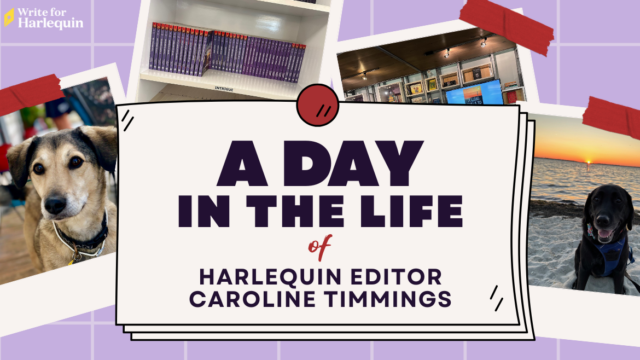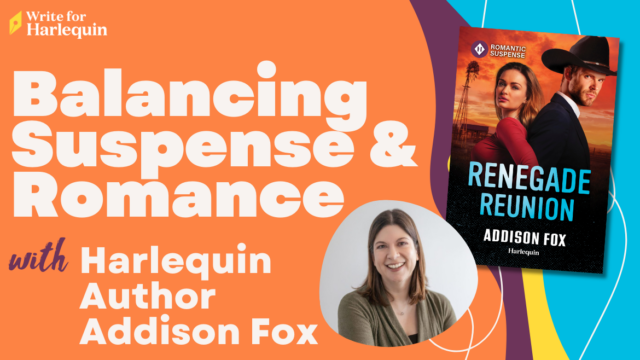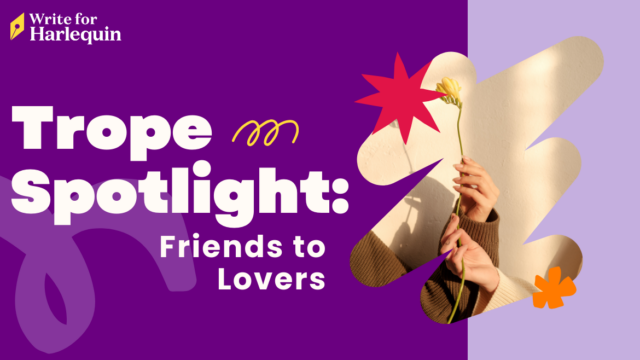Not the in-the-office stuff, of course, but how to spot a great one for a novel.
Here are three tips…
The Lowdown on Emotional Conflicts
During our combined time at Harlequin, there’s one term we might have heard more than any other when we’ve assessed manuscripts, and that is “Emotional Conflict.”
Besides searching for those fresh and special voices, it is the presence of a great or bad emotional conflict that is so often the clincher for us – what will make or break your story!
And because it is so so important, we thought it’d be helpful to put together a list of the three most common traps we see our writers fall into when it comes to emotional conflicts.
But what exactly do we mean by emotional conflict? Well, there are two things we look for… Your story will need both an internal and external conflict and it’s crucial you understand the difference between them!
(As a quick refresher…!)
An Internal Conflict is when a:
Hero/heroine is grappling with emotional or ethical question which prevent him/her from giving into love (initially!). And these internal conflicts are shaped by their pasts.
Whereas External Conflicts:
Are, essentially, plot devices: forces outside of your hero and heroine’s control. These pose obstacles to potential romance – they’re often misunderstandings, difficult situations or a problem caused by the influence of a secondary character.
So, with this in mind…..Here are the most common traps we see with internal/external conflicts in submissions:
Common trap #1
Perhaps the most prevalent! Where you have a great external conflict but the internal one is undeveloped. Remember, even though external conflicts are important, they shouldn’t drive your story – the internal conflicts are more interesting! Emphasising your character’s internal conflict will make their motivations seem more powerful and real, meanwhile we’re more likely to care about them and their resolution, if we know them better.
Common Trap #2
Another common issue with conflicts is timing. You might have set up a really meaty internal emotional conflict for both characters but…
Your next challenge is timing your pivotal turning point/big reveal for your characters (when will they be ready to love or open up about their past to the other?) Your readers are waiting for this satisfying moment!
But resolve their emotional conflicts too soon and the reader may lose interest if there is no tension left in your story!
Too late and it could be frustrating, or slow paced, as your characters have always got their barriers up.
(NB: You have the added pressure of ensuring your characters’ motivations are sympathetic and believable to the reader. Don’t let their actions contradict their conflicts, or make it feel as if your emotional conflict has been conveniently “plonked in” to your story and not followed through!)
Still, with us?!
The final Common Trap #3
On the complete other end of the spectrum, occasionally we see writers who’ve tackled lots of great internal conflicts, but have underplayed the external ones, as a result.
You could try for 1 internal conflict per character and 1 or 2 external ones as a general guideline. Too many plot devices and too much emotional baggage might be distracting for the reader. And an overload of emotion might mean slow pace, repetition and not enough time for fun romance between your characters!
Ultimately, there’s not a perfect formula, it’s just a perfect balance with your conflicts. We want to see your wonderful writing complimented by exciting external tensions and immersing internal ones. Remember the latter is priority! Wring out every scrap of emotion out of your story – make your characters fully developed, vulnerable, credible and totally relatable!
Find that perfect balance and we’ll be very excited!
So grab a magazine, check out a soap opera, listen to some elevator conversations, eavesdrop on some neighbors and find the perfect conflicts and motivations for your characters and story!
Happy reading–and writing!
–From our SYTYCW archives




